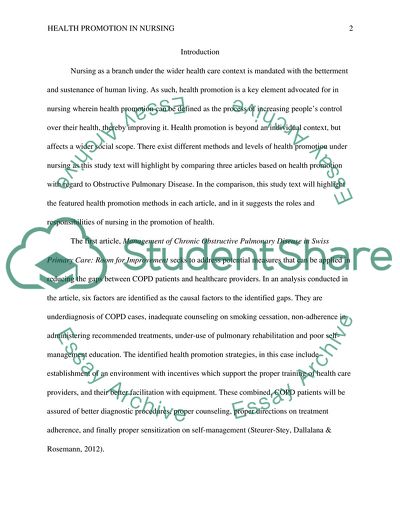Cite this document
(Health promotion in nursing Essay Example | Topics and Well Written Essays - 1000 words, n.d.)
Health promotion in nursing Essay Example | Topics and Well Written Essays - 1000 words. https://studentshare.org/nursing/1828715-health-promotion-methods-in-nursing
Health promotion in nursing Essay Example | Topics and Well Written Essays - 1000 words. https://studentshare.org/nursing/1828715-health-promotion-methods-in-nursing
(Health Promotion in Nursing Essay Example | Topics and Well Written Essays - 1000 Words)
Health Promotion in Nursing Essay Example | Topics and Well Written Essays - 1000 Words. https://studentshare.org/nursing/1828715-health-promotion-methods-in-nursing.
Health Promotion in Nursing Essay Example | Topics and Well Written Essays - 1000 Words. https://studentshare.org/nursing/1828715-health-promotion-methods-in-nursing.
“Health Promotion in Nursing Essay Example | Topics and Well Written Essays - 1000 Words”. https://studentshare.org/nursing/1828715-health-promotion-methods-in-nursing.


